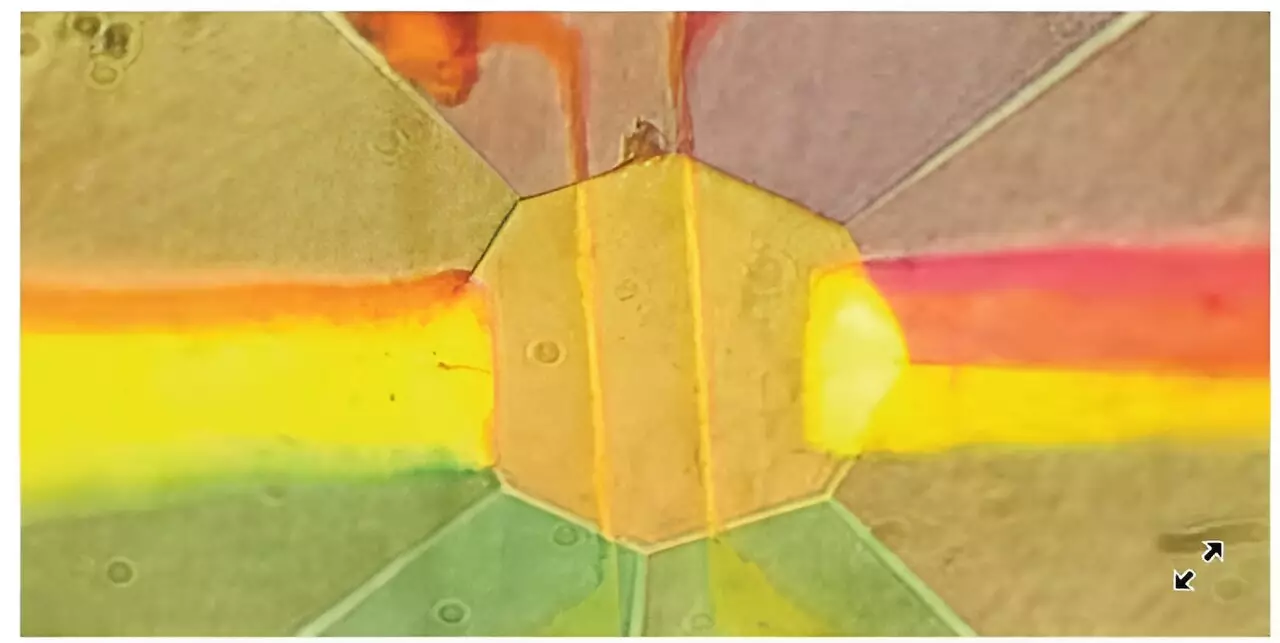The world of superconductivity began to take shape in 1911 with Heike Kamerlingh Onnes’s groundbreaking discovery of metallic mercury. Upon cooling to a critical temperature of 4.2 Kelvin, mercury displayed a remarkable ability to conduct electricity without resistance, igniting a fervent quest among materials scientists to uncover the underlying phenomena. The ultimate objective of this extensive research has been to discover materials capable of superconductivity at higher temperatures, ideally at ambient conditions, which would revolutionize electricity transport and various technologies.
While certain chemical elements transition into superconducting states under high pressure, the complexity of measuring these changes presents a monumental challenge. Now, a collaborative effort between a team of scientists from Germany and the U.S. has yielded improved techniques for examining superconducting properties of sulfur under high pressure, as outlined in their recent publication in Physical Review Letters.
The Sulfur Superconductivity Breakthrough
At pressures exceeding 90 gigapascals—almost a million times atmospheric pressure—sulfur transitions from a nonmetal to a metallic state and becomes superconducting at low temperatures. The latest study applied an astonishing 160 gigapascals, revealing that at 17 Kelvin, sulfur’s electrons paired up into what are termed Cooper pairs. This pairing is essential for superconductivity; they found that the superconducting state remains stable below this threshold. The implications of these findings are profound, as they not only advance our understanding of sulfur but also open new avenues for exploring other materials with similarly disruptive properties.
The research team utilized advanced technology, such as Bridgman anvil pressure cells and diamond anvil cells, to create conditions that support high-pressure experiments. The diamond anvil cell, in particular, is a sophisticated instrument capable of exerting pressures up to 200 GPa on subsized samples. Through this technique, they executed tunneling spectroscopy, a method that leverages quantum mechanical tunneling to gain insight into the electrical interactions of the materials being studied.
Advancements in Measurement Techniques
Despite the challenges in studying materials under extreme pressures—where conventional methods can falter due to compromised tunneling barriers—the team innovatively devised a means to fabricate planar tunnel junctions in situ within the diamond anvil cell itself. This foundational change allowed for electron tunneling measurements at pressures exceeding 1 megabar (100 GPa) without significantly altering the sample’s properties.
Using tantalum pentoxide as an insulating layer between two conductors, sulfur, and tantalum, the team crafted a stable tunneling interface that could withstand the pressures involved. This work not only demonstrated sulfur’s critical temperature and unique properties as a type II superconductor but also established a reproducible framework for measuring superconducting gaps.
Understanding the Superconducting Gap
The clarifying measurements of the superconducting gap—essential for understanding how superconductivity manifests at varying pressures—highlight the precision of their methodology. The key to comprehending the mechanism of superconductivity lies in this energy gap, which reflects the interactions between electrons as they pair up to facilitate superconductivity. The team’s successful identification of sulfur’s critical temperature and the gap’s characteristics could usher in new research and development in materials science.
Feng Du from the Max Planck Institute for Chemistry acknowledged the historical context and experimental challenges, emphasizing that extreme pressure can unveil extraordinary properties that remain dormant at standard atmospheric conditions. Their innovative “microscope” for superconductivity represents a formidable step forward in revealing the latent potential of materials under conditions neither seen nor understood before.
The Future: Towards Room-Temperature Superconductors
Looking ahead, the ambition does not end with sulfur alone. The research team expresses hope that their novel methodology can be applied to other less understood exotic materials, such as hydrides and nickelates, that may offer scalable superconducting properties at much higher temperatures. The urgency to identify and design room-temperature superconductors is driven not only by the prospect of energy-efficient electrical systems but also by transformative applications in transportation, computing, and more.
As they set their sights on exploring these materials, there’s an air of optimism among the scientists about the potential for future breakthroughs. The paradigm of superconductivity is evolving, and though challenges remain, the groundwork laid by this work is paving the way toward unlocking new energy-efficient technologies. The investigation into sulfur’s superconducting traits is but a chapter in a larger narrative that could redefine how we understand and utilize electricity in our technologically driven world.

